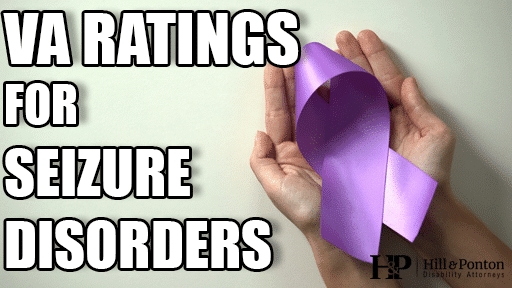We’ve covered how to rate nerve conditions in general, information on the peripheral nerves of the lower back and legs, and in this blog post, we now look at the peripheral nerves of the upper back and arms.
Peripheral Nerves of the Upper Body and VA Benefits
The peripheral nerves in the upper back and neck go into the shoulders and arms. The following is a list of the peripheral nerves in the upper back/neck that can be rated for VA disability purposes:
- Radial nerve: This is one of the most significant nerves in the shoulder, arm, and hand. The radial nerve controls movements such as bending the elbow, turning the forearm up or down, lifting the hand upward at the wrist, turning the hand from side to side, and moving the thumb straight away from the palm.
- Median nerve: This nerve is in the forearm and hand, and passes through the carpal tunnel in the wrist. It is the nerve affected by carpal tunnel syndrome and controls movements such as turning the forearm up or down, curling the fingers, and bending the hand down at the wrist.
- Ulnar nerve: One of the biggest nerves in the arm, passing behind the elbow, through the wrist, and to the little finger and ring fingers. The ulnar nerve controls movements such as curling the fingers, bending the hand down at the wrist, opening and closing the fingers, and lifting the hand upward.
- Musculocutaneous nerve: The musculocutaneous nerve is found in the arm, and assists other nerves control movements in the elbow and forearm
- Axillary nerve: This nerve controls the deltoid and teres minor muscles that are found in the upper arm.
- Long thoracic nerve: This nerve is responsible for controlling the muscles in the rib cage underneath the arm. It is necessary for movements such as lifting overhead, throwing, punching, and/or other movements involving the scapula bone. The long thoracic nerve also plays a role in expanding the ribs when breathing.
As with all nerve conditions, the VA looks at which specific nerve is affected in order to rate the condition. However, when rating conditions involving the peripheral nerves of the upper back/neck and the arms, the VA also considers whether an entire group of nerves is affected. The following nerve groups (called radicular groups) are involved with rating the peripheral nerves of the upper back/neck and arms:
- Upper radicular group: The upper radicular group includes the long thoracic nerve, median nerve, radial nerve, musculocutaneous nerve, axillary nerve, and all nerves that offshoot from these. The nerves of the upper radicular group are associated with movements such as raising and lowering the arm to the side, bending the elbow, turning the forearm up or down, and rotating the arm away from the body.
- Middle radicular group: This group includes the long thoracic nerve, musculocutaneous nerve, median nerve, and radial nerve and controls movements such as raising the arm to the side, lifting the hand up at the wrist, bending the elbow, and turning the forearm up or down.
- Lower radicular group: The radial nerve, median nerve, and ulnar nerve make up the lower radicular group. The lower radicular group nerves control the ability to bend the hand up at the wrist, turn the hand from side to side at the wrist, curl the fingers, bend the hand down at the wrist, open and close the fingers, and move the thumb straight away from the palm of the hand.
Each peripheral nerve of the upper back/neck and the arms contains their own diagnostic codes for rating purposes. If all or most of the nerves in a particular radicular group are affected, then the VA will rate the condition according to the radicular group affected (upper, middle, or lower). Each radicular group has its own diagnostic codes. There are also diagnostic codes that apply if all three radicular groups (upper, middle, and lower) are affected.
Diagnostic Codes Associated with Each Nerve
The following table lists the diagnostic codes associated with each nerve, along with the diagnostic codes for each radicular group:
| Nerve/Group Affected | Diagnostic Code for Paralysis of the Nerve | Diagnostic Code for Neuritis of the Nerve | Diagnostic Code for Neuralgia of the Nerve |
| Radial | 8514 | 8614 | 8714 |
| Median | 8515 | 8615 | 8715 |
| Ulnar | 8516 | 8616 | 8716 |
| Musculocutaneous | 8517 | 8617 | 8717 |
| Axillary | 8518 | 8618 | 8718 |
| Long thoracic | 8519 | 8619 | 8719 |
| Upper radicular group | 8510 | 8610 | 8710 |
| Middle radicular group | 8511 | 8611 | 8711 |
| Lower radicular group | 8512 | 8612 | 8712 |
| All three groups affected | 8513 | 8613 | 8713 |
For each nerve or each radicular group affected, be sure to check and see if you would be able to receive a higher rating based on the limitation of motion. The peripheral nerves of the upper back/neck and arms are associated with limited motion in the shoulder elbow, forearm, wrist, and fingers. Additionally, when dealing with the upper peripheral nerves, the VA rating criteria will consider whether the side of the body affected is the veteran’s dominant arm/hand. Lastly, when deciding whether to rate a nerve condition according to a specific nerve versus a radicular group, look at whether the majority of movements associated with a certain group are affected. If only a couple nerves in one of the radicular groups are affected, the condition should be rated according to the specific nerve affected. A good rule of thumb is to make sure that the nerve or radicular group the VA uses for rating best approximates the overall function of the arm that has been affected.




